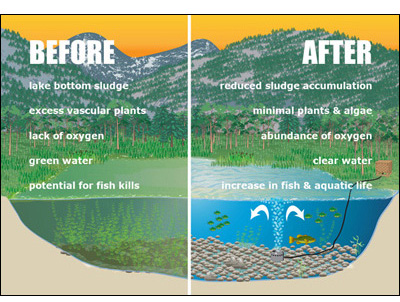Lake Restoration
The most effective methods to restore lakes include removing excess phosphorus from their environment, restoring dissolved oxygen, and preventing the growth of algal blooms. Externally, phosphorous can be introduced to lakes from runoff or from within the lake's nutrient-rich sediments. The first causes phosphorous to be released when oxygen is low in the lake's upper layer. The latter however reduces algae growth by removing nutrients. These internal recycling processes can also be controlled with in-lake solutions. These treatments are typically iron and aluminum sulfate.

